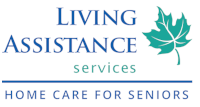Shingles affects about 130,000 Canadians every year, according to reports by Immunize Canada, and the majority of those individuals are seniors. In fact, one third of Canadians will get shingles in their lifetime. Because this condition is so prevalent, we’d like to share some information that may be helpful to our clients and their families. Please reach out to your family doctor or another medical professional if you have concerns about your own health.
What is shingles?
Shingles is a viral infection that’s caused by the varicella-zoster virus, which is the same virus that causes chickenpox—a highly contagious, very common childhood illness that most of us probably had at one point. Once you’ve had chicken pox, the virus stays in your body, lying inactive in the nerve tissue near your brain and spinal cord. If the virus reactivates in your body when you’re older, often as a response to illness or stress, it’s likely going to take the form of shingles.
The shingles virus presents as a painful rash that can occur anywhere on the body. The rash looks like a series of small blisters and often wraps around your torso on one side. It can also appear on the legs, arms, face or other parts of the body. Shingles can last weeks or months depending on the severity of the case.
Who does shingles commonly affect?
Once you’ve had chicken pox, you have the potential to get shingles. That said, it largely affects people over the age of 50. If you have a weakened immune system due to an autoimmune condition, HIV or AIDS, cancer, or medication you’ve been prescribed, you are more likely to contract shingles.
Treatment and prevention
Children are now offered immunization against chicken pox, which prevents them from getting shingles in adulthood. However, most present-day adults are susceptible to the virus. While having a healthy immune system can help fight off the virus, it’s often impossible to prevent once you’ve been exposed. Shingles is not contagious like a cold or flu, but it can be spread to others when the rash is in the blister phase (typically, in the first 1-2 weeks of infection). For this reason, it’s important to cover the rash, particularly when it appears as blisters on the skin. Once the blisters dry up and begin to fade, a person is far less contagious.
If you suspect that you or an aging loved one has shingles, please speak to your family doctor about assessment and treatment options. This may include antiviral medications, painkillers, topical treatments, cortizone injections and other options. Shingles can range from uncomfortable to incredibly painful, so it’s important to get care as soon as possible to reduce the severity and duration of illness. Our caregivers are available to help support individuals who are dealing with the impact of shingles—please reach out to our team to learn more. Thanks for reading, and please share this post with anyone who may find it helpful!
Sources:
https://www.mayoclinic.org/diseases-conditions/shingles/symptoms-causes/syc-20353054
https://www.canada.ca/en/public-health/services/infectious-diseases/fact-sheet-shingles-herpes-zoster.html

